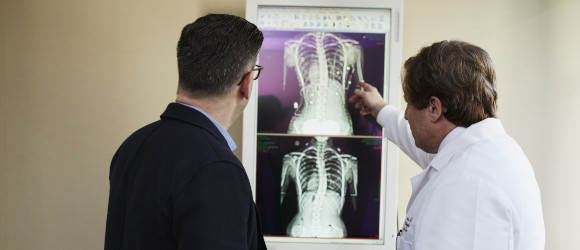Expert opinions and online advice on general urology issues delivered via your computer or mobile device. Second opinion is available wherever there is an internet. All you need is a PC or a smartphone.
The term general urology can be attributed to benign diseases and pathological conditions of the urinary tract and genitals.
The former include the kidneys, the bladder, ureters, and the urethra. The most frequent issue in both women and men is abnormal urinary excretion, which is usually caused by renal calculi (stones).
As regards reproductive organs, urologists deal only with the male sexual system (testicles, testicular appendages, seminal ducts and seminal vesicles, penis, prostate). Thus, erectile dysfunction and impotence, for example, fall into their area of focus.
An important task of general urology is also the prevention of malignancies.
Most common urologic conditions
The urogenital tract is one of the most complex systems of the human body. The disease patterns dealt with by urology specialists are correspondingly diverse.
Urinary tract infections are usually triggered by bacteria. The urine itself is basically free of external pathogens. However, bacteria can penetrate via the urethra up to the urinary bladder. There they can trigger an inflammation, called cystitis. Urinary tract infections occur mainly in women and are exceedingly painful. Symptoms include a burning sensation when urinating, frequent urination, and blood in the urine.
Around 10 percent of all women regularly suffer from urinary incontinence. Stress often plays a role; other causes can be age, damage to the urethra, but also childbirth. The sphincter muscle of the urethra can no longer prevent an unwanted flow of urine when there is increased pressure in the abdominal cavity.
Deposits of minerals and salts in the renal ducts and renal pelvis are called kidney stones. They may be caused, for example, by improper nutrition. While smaller stones are excreted without any problems, larger ones cause severe pain while passing through the ureters, the urinary bladder and finally the urethra. Men are affected twice as often as women.
Renal insufficiency is poor function or total failure of kidneys. It has grave consequences for the body: the blood is no longer adequately cleansed; waste products are no longer discharged via the urine, and thus accumulate in the bloodstream.
Acute or chronic inflammation of the prostate is called prostatitis. It is caused by bacteria or urine substances. Symptoms include painful and/or frequent urination.
Diagnostic and therapeutic procedures in urology
The diversity of urology conditions requires application of various examination and treatment methods.
Diagnostic procedures include specialty-specific studies (such as cystometry used for bladder function evaluation, or uro-dynamics testing) and a number of imaging exams (X-ray, MRI, CT, etc) of the urinary tract organs (urography, pyelogram, renal ultrasound, etc.). Endoscopy of the urinary bladder helps to diagnose bladder cancer, chronic pelvic pain, benign prostate hyperplasia and urinary incontinence.
Some urology conditions (e.g. inflammations) are well treated by drugs, whereas certain benign disorders, including kidney stones, prostate adenoma (BPH), or congenital anomalies, may require conventional or minimally invasive surgery.
What is the service about?
A second opinion on general urology is a service which makes it possible to get a remote consultation of a qualified specialist, based on available medical summary or study results.
It might be helpful:
• to confirm the existing diagnosis;
• to make sure that the recommended treatment is correct;
• to obtain information on advanced methods of diagnostics and treatment relating to general urology issues;
• to get expert commentary on previously performed exam results;
• to make the right choice if there are two or more possible therapeutic options.
What will the client get?
A diagnostic conclusion, as well as recommendations on treatment and follow-up, based on the provided information. If the initial data is incomplete, further examinations will be suggested.
What data should be provided to get a second opinion?
Written reports:
- Medical report (desirable)
- Description of X-ray, MRI, CT images (desirable)
- Laboratory test results
- Up to 5 pages included
Radiology data:
- X-ray (desirable)
- MRI (desirable)
- CT (desirable)
- Ultrasound
- Up to 2 examinations included
What are the second opinion formats and terms?
Written second opinion:
- Making a report based on the data provided, the consulting specialist summary including a diagnostic report and recommendations for further diagnostic, treatment and observation tactics. Report size: up to 1 page.
Video consultation:
- All services of written second opinion. Additionally: a 10-minute video consultation with a doctor, including a visual patient examination, clarification of symptoms, radiology images consulting, explanation of the proposed treatment tactics, answering patient's questions.
Phone consultation:
- All services of written second opinion. Additionally: a 10-minute telephone consultation with a doctor, including clarification of symptoms, explanation of the proposed treatment tactics, answering patient's questions.
Specialists in General Urology
You do not have to spend hours getting through busy hospital lines, or sitting in waiting rooms. Expert advice will be delivered fast and free of your effort.
Sort by: [[ s.txt ]]sortsort
Nothing found, try changing search options


